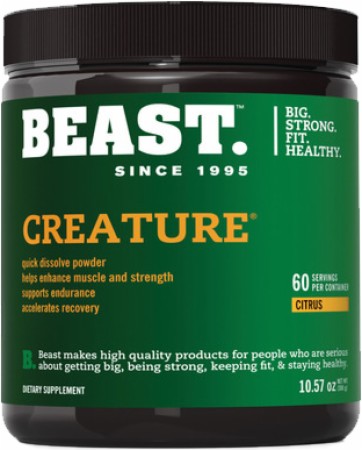Here is part 2 to the IIFYM topic. I hope this information helps everyone with understanding how this style of "dieting" works.
This article
Written by: Omar Aldabel
Defining Terminology
Before we begin, there are a few terms that you need to familiarise yourself with in order to fully understand the article:
- Maintenance level: the amount of calories needed to sustain your current body weight
- Deficit: eating below your maintenance level calories
- Surplus: eating above your maintenance level calories
- BMR: Basal Metabolic Rate; the amount of calories your body burns at rest just to stay alive NOT including any activity
- TDEE: Total Daily Energy Expenditure; the amount of calories your body burns in a 24 hour period including all exercise, sleeping, walking etc
- Ectomorph: used to describe someone with trouble gaining weight/with a fast metabolism
- Endomorph: used to describe someone who gains weight easily and often has trouble losing fat/with a slow metabolism
To Re-Cap from last week:
- Macro-nutrients: Macro-nutrients are nutrients that provide calories or energy. There are three macro-nutrients:
- Micro-nutrients: These nutrients help your organs grow.
*NOTE* We are aware that the words endomorph and ectomorph are used to describe a person’s bone structure, however, in the fitness industry these words have become interchangeable with the speed of one’s metabolism. We are using these words in this context.
STEP 1: Knowing your stats
You want to know your height, weight, gender (duh!) and knowledge of your daily activities (including training, walking, sleeping, the activity levels involved in your job e.g a pick packer versus a desk job) in order to work out your TDEE.
STEP 2: Plug your stats into our TDEE calculator
We have carefully constructed and designed, what we believe to be, one of the most accurate TDEE calculators available on the net.
CLICK HERE to calculate your total daily expenditure.
TDEE tells you how much you need to eat in order to sustain your weight at your current activity levels.
ALTERNATIVE:
Another alternative to calculate your TDEE is using the following simple algorithm.
Take your bodyweight in kg’s and convert it to lbs.
Example: 100kg physique x 2.2 = 220lbs
Now multiply your bodyweight by 16.
Example: 220lbs x 16 = 3,520
Therefore, an individual with a bodyweight of 100kg would have a TDEE of 3,520 calories (approximation)
*NOTE* We are aware that it is difficult to be certain of your activity levels (amount spent sleeping each night etc) and it is not a big issue. Just give an approximate figure (preferably as close as possible to what you actually do) and you can monitor your weight loss/gain and adjust accordingly. *NOTE*
STEP 3: Calculate your macronutrient split
Now that you know the amount of calories you need to consume to maintain your weight, it’s time to work out how you want to divide your macros.
In order to be able to divide your macros correctly, you will want to be aware of the caloric values of each macronutrient.
- Carbohydrates: 4 calories per one gram
- Fat: 9 calories per one gram
- Protein: 4 calories per one gram
We’ll show you an example of how the math works so you can apply the formula to yourself.
EXAMPLE:
Now, let’s say you’re a 150lb (68kg) male with a TDEE of 3000 calories.
While protein and fat are necessary for a person to function as well as retain muscle, these macronutrients will be set from the beginning and the rest of the calorie allowance will go to carbohydrates.
You want to consume at least 1g of protein per lb of bodyweight (whilst bulking/shredding), 25-30% of total calories as fats (this can be adjusted depending on how you feel/what you prefer to eat later) and the rest as carbohydrates.
(may need to adjust this, and divulge why we’re using these exact amounts – why 1gram? why 0.87gram? why more when bulking?)
Here’s the math:
- Protein: 150lb x 1g of protein per 1lb of bodyweight = 150g x 4 = 600 calories
- Fat: 3000 calories/4 = 750
- 750/9 = 83g of fat (better to either round up to 85g or round down to 80g for the health of your sanity) – we’ll use 80g of fat as an example. 80 x9 = 720 calories.
- Total P+F: 720 + 600 = 1320
- Carbohydrates: 3000 – 1320 = 1680 calories remaining to be assigned to carbohydrates
- 1680 / 4 = 420g of carbohydrates
Our hypothetical 150lb male with a TDEE of 3000 calories will be eating 150g of protein, 80g of fat and 420g of carbohydrates daily in order to maintain his current weight.
STEP 4: Hit your maintenance macros for two weeks
Now that you know your TDEE, your maintenance level calories and your macronutrient split; you want to go ahead and hit those numbers for two weeks in order to gauge whether the calculator was right or not. If you find your weight is steady after two weeks: congratulations, you’ve just found your maintenance level!
If you lost weight, just add carbohydrates until your weight is steady: congratulations, you’ve just found your maintenance level!
If you gained weight, consume slightly less carbohydrates until your weight is steady…and you guessed it: congratulations, you’ve just found your maintenance level!
STEP 5: Adjust your macros according to your goals
Now that you know your maintenance level and your macronutrient split, achieving your goal of bulking, cutting or even maintaining is simple.
If our 150lb male from earlier on is an endomorph who wants to bulk, he can add anywhere from 100 calories to 500 (made up of carbohydrates or fats depending on preference) calories per day to maintenance in order to gain weight. However, being an endomorph who stores fat easily, it would be advisable if he stuck to the lower side of that range in order to minimise fat gain.
However, if he is an ectomorph who wants to bulk, we would stick to the higher side of that range in order to gain weight.
The same principles apply to cutting; if an endomorph wanted to lose weight, his deficit could again range from 100 to 500 calories, however, towards the lower end of that range, he would probably struggle to lose weight at a fast enough rate.
Again, for an ectomorph, he might have to stick to the lower end of that range.
STEP 6: Enjoy your results!
This is the part where you enjoy the benefits of counting your macros and start to see results!
Enjoy it!
DISCLAIMER: If you find that this happens to you, be aware that it is entirely normal…and we take no responsibility for it.
Here's to a new you!
Matthew Eubanks











